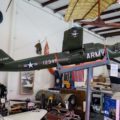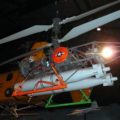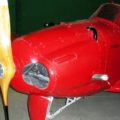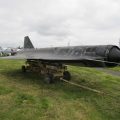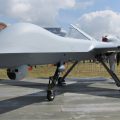
GAF Pika | |
|---|---|
| Land | Australië |
| Role | Doel drone |
| Eerste vlucht | 28 augustus 1952 |
| Gebouwd | 517 |
De GAF Jindivik is een radiografisch bestuurbare doeldrone geproduceerd door de Australian Government Aircraft Factories (GAF). De naam is van een Aboriginal Australisch woord dat "de opgejaagde" betekent. Twee handmatig bestuurbare prototypes, werden gebouwd als de GAF Pika (Project als een proof of concept om de aerodynamica, motor en radiografische besturingssystemen te testen, geserialiseerd A92-1/2, 'B-1/2'. De radiografisch bestuurbare Jindivik werd aanvankelijk aangeduid als het Project B en ontving series in de A93-serie. Pika is een Aboriginal Australisch woord dat vlieger betekent
Bron: GAF Pika op Wikipedia
| GAF Pika | |
|---|---|
| Fotograaf | Vladimir Yakubov |
| Lokalisatie | RAAF Museum, Puntkok |
| Foto 's | 47 |
Gerelateerde kits:
Kits zoeken op eBay:
Zie ook:
De GAF Pika was a piloted prototype of a radio-controlled target drone that was developed by the Australian Government Aircraft Factories (GAF) in the early 1950s. The Pika was used to test the aerodynamics, engine and radio control systems of the drone, which was later named Jindivik, an Aboriginal word meaning “the hunted one”. The Pika was powered by an Armstrong Siddeley Adder turbojet engine, which had a thrust of 500 kgf. The Pika had a wingspan of 5.79 m, a length of 7.49 m and a height of 1.92 m. It had a maximum speed of 756 km/h and a service ceiling of 9,754 m.
Two Pika prototypes were built and flown from Woomera airfield in South Australia. The first one, A93-1, made its maiden flight on 4 November 1950 and was destroyed in an accident in April 1951. The second one, A93-2, flew for the first time in April 1951 and had a longer nose and exhaust cone than the first one. It is currently preserved at the RAAF Museum at Point Cook, Victoria.
Views : 1044


